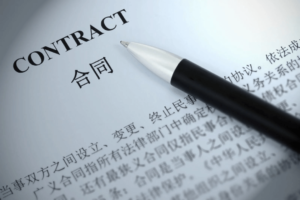The European Patent Convention (EPC) is an international treaty that was signed in 1973 and entered into force in 1977. Its purpose is to establish a unified patent system in Europe, allowing inventors and companies to obtain patent protection in multiple European countries with a single application. The EPC is administered by the European Patent Office (EPO), which is responsible for examining and granting European patents.
The EPC sets out the provisions and requirements for obtaining a European patent. It establishes the criteria for patentability, such as novelty, inventive step, and industrial applicability. It also outlines the procedures for filing a patent application, including the examination process and the granting of a patent. The EPC also provides for the centralization of certain administrative tasks, such as the publication of patent applications and the payment of fees.
Table of Contents
ToggleKey Takeaways
- The European Patent Convention (EPC) is an international treaty that provides a unified system for patent protection in Europe.
- The EPC offers numerous benefits for patent protection in Europe, including a streamlined application process and a single patent that covers multiple countries.
- The European Patent Office (EPO) plays a crucial role in enforcing the EPC and ensuring that patents are granted and enforced consistently across Europe.
- The EPC has had a significant impact on international patent protection, as it has become a model for other countries and regions around the world.
- The EPC has also had a positive impact on innovation and technological development in Europe, as it has encouraged companies to invest in research and development.
The benefits of the EPC for patent protection in Europe
One of the key benefits of the EPC is its streamlined application process. By allowing inventors and companies to file a single application for patent protection in multiple European countries, the EPC reduces the administrative burden and costs associated with obtaining individual national patents. This makes it easier for inventors and companies to protect their inventions across Europe, particularly for those who operate in multiple countries.
Another benefit of the EPC is that it provides uniform patent protection across multiple countries. Once a European patent is granted, it has the same legal effect as a national patent in each designated country. This means that inventors and companies can enforce their patent rights in any country covered by the EPC, without having to navigate different legal systems or languages. This provides greater certainty and consistency in patent protection across Europe.
In addition to streamlining the application process and providing uniform patent protection, the EPC also offers cost-effective and efficient patent protection. The fees for obtaining a European patent are generally lower than the fees for obtaining individual national patents in multiple countries. Furthermore, the EPC provides a centralized system for patent examination, which allows for greater efficiency and consistency in the examination process. This can result in faster and more reliable patent grants.
The role of the European Patent Office (EPO) in enforcing the EPC
The European Patent Office (EPO) plays a crucial role in enforcing the European Patent Convention (EPC). It is responsible for examining patent applications, granting European patents, and maintaining the European Patent Register. The EPO also provides legal and technical assistance to inventors and companies throughout the patent application process.
One of the key responsibilities of the EPO is to examine patent applications to determine whether they meet the requirements of the EPC. This involves conducting a search for prior art and assessing whether the invention is new, involves an inventive step, and is industrially applicable. The EPO also examines the formal requirements of the application, such as the clarity and sufficiency of the description and claims.
The EPO’s role in maintaining the integrity of the EPC is crucial for ensuring that patent protection is granted only to inventions that meet the necessary criteria. By conducting thorough examinations and applying consistent standards, the EPO helps to ensure that European patents are of high quality and provide meaningful protection for inventors and companies. This helps to foster innovation and technological development in Europe.
The impact of the EPC on international patent protection
The European Patent Convention (EPC) has had a significant impact on international patent protection. Compared to other international patent systems, such as the Patent Cooperation Treaty (PCT) or national patent systems, the EPC offers several advantages.
One advantage of the EPC is its streamlined application process. By allowing inventors and companies to file a single application for patent protection in multiple European countries, the EPC reduces administrative burdens and costs. This makes it easier for inventors and companies to protect their inventions across Europe, particularly for those who operate in multiple countries. In contrast, under the PCT or national patent systems, inventors and companies would need to file separate applications in each country of interest, which can be time-consuming and expensive.
Another advantage of the EPC is that it provides uniform patent protection across multiple countries. Once a European patent is granted, it has the same legal effect as a national patent in each designated country. This means that inventors and companies can enforce their patent rights in any country covered by the EPC, without having to navigate different legal systems or languages. This provides greater certainty and consistency in patent protection across Europe. In contrast, under the PCT or national patent systems, inventors and companies would need to navigate different legal systems and languages in each country of interest.
Despite these advantages, there are also some disadvantages of the EPC for international patent protection. One disadvantage is that the EPC only covers European countries that are party to the treaty. This means that inventors and companies who are interested in obtaining patent protection outside of Europe would still need to file separate applications in each country of interest. In contrast, under the PCT, inventors and companies can file a single international application that designates multiple countries around the world.
The impact of the EPC on innovation and technological development in Europe
The European Patent Convention (EPC) has had a significant impact on innovation and technological development in Europe. By providing a streamlined and cost-effective system for obtaining patent protection, the EPC has encouraged inventors and companies to invest in research and development and bring their inventions to market.
One way in which the EPC has impacted innovation is by reducing the administrative burden and costs associated with obtaining patent protection. By allowing inventors and companies to file a single application for patent protection in multiple European countries, the EPC has made it easier for them to protect their inventions across Europe. This has encouraged inventors and companies to seek patent protection for their inventions, knowing that they can obtain meaningful protection in multiple countries without having to navigate different legal systems or languages.
The EPC has also had a positive impact on technological development in Europe by providing uniform patent protection across multiple countries. Once a European patent is granted, it has the same legal effect as a national patent in each designated country. This means that inventors and companies can enforce their patent rights in any country covered by the EPC, without having to navigate different legal systems or languages. This provides greater certainty and consistency in patent protection across Europe, which encourages inventors and companies to invest in research and development and bring their inventions to market.
The challenges facing the EPC in the 21st century

While the European Patent Convention (EPC) has been successful in providing a unified patent system in Europe, it also faces several challenges in the 21st century. These challenges include increasing demand for patent protection, the need for harmonization with other international patent systems, and the rise of new technologies.
One of the main challenges facing the EPC is the increasing demand for patent protection. As technology continues to advance at a rapid pace, inventors and companies are filing more patent applications than ever before. This puts pressure on the European Patent Office (EPO) to handle a growing number of applications and maintain high standards of examination. To address this challenge, the EPO has implemented various measures to increase efficiency, such as hiring more examiners and implementing new technologies.
Another challenge facing the EPC is the need for harmonization with other international patent systems. While the EPC provides a streamlined and cost-effective system for obtaining patent protection in Europe, it does not cover countries outside of Europe. This means that inventors and companies who are interested in obtaining patent protection outside of Europe still need to file separate applications in each country of interest. To address this challenge, the EPC has entered into agreements with other international patent systems, such as the Patent Cooperation Treaty (PCT), to facilitate the filing and examination of international patent applications.
The rise of new technologies, such as artificial intelligence and blockchain, also presents challenges for the EPC. These technologies raise complex legal and technical issues that may require new approaches to patent examination and enforcement. To address this challenge, the EPO has been working to develop guidelines and procedures for examining patent applications in these emerging fields.
The role of the Unified Patent Court (UPC) in enforcing the EPC
The Unified Patent Court (UPC) plays a crucial role in enforcing the European Patent Convention (EPC). The UPC is a specialized court that has exclusive jurisdiction over disputes relating to European patents and European patents with unitary effect. It is responsible for hearing cases involving infringement of European patents and revocation actions.
One of the key responsibilities of the UPC is to hear cases involving infringement of European patents. When a patent holder believes that their patent rights have been infringed, they can file a lawsuit before the UPC seeking an injunction and damages. The UPC has the power to grant injunctions, award damages, and order other remedies to protect the patent holder’s rights.
The UPC is also responsible for hearing revocation actions, which are lawsuits filed by third parties seeking to invalidate a European patent. When a third party believes that a European patent is invalid, they can file a lawsuit before the UPC seeking its revocation. The UPC has the power to declare a European patent invalid if it finds that it does not meet the requirements of the EPC.
The impact of Brexit on the EPC and patent protection in Europe
Brexit has had a significant impact on the European Patent Convention (EPC) and patent protection in Europe. With the United Kingdom’s withdrawal from the European Union, there are several potential implications for the EPC and patent protection in Europe.
One potential implication of Brexit is that the United Kingdom will no longer be a member of the European Patent Organization (EPOrg), which is the administrative body of the EPC. This means that the United Kingdom will no longer participate in the decision-making process of the EPOrg and will not have a say in the development of the EPC. However, it is important to note that the EPC is an international treaty that is separate from the European Union, so Brexit does not affect the United Kingdom’s membership in the EPC itself.
Another potential implication of Brexit is that the United Kingdom may no longer be covered by European patents. Currently, European patents automatically cover all member states of the European Patent Organization, which includes all European Union member states. However, with the United Kingdom’s withdrawal from the European Union, it is unclear whether European patents will continue to cover the United Kingdom. This could have implications for inventors and companies who are seeking patent protection in Europe, as they may need to file separate applications in both the European Union and the United Kingdom.
To mitigate these potential negative impacts, there have been discussions about establishing a new agreement between the European Union and the United Kingdom to ensure that European patents continue to cover the United Kingdom. This would require negotiations between the two parties and could take some time to finalize. In the meantime, inventors and companies who are seeking patent protection in both the European Union and the United Kingdom may need to consider filing separate applications in each jurisdiction.
The future of the EPC and its potential impact on global patent protection
The future of the European Patent Convention (EPC) holds several potential developments that could have a significant impact on global patent protection. These developments include further harmonization with other international patent systems, increased cooperation with non-European countries, and the adoption of new technologies.
One potential development for the EPC is further harmonization with other international patent systems. While the EPC provides a streamlined and cost-effective system for obtaining patent protection in Europe, it does not cover countries outside of Europe. To address this limitation, there have been discussions about establishing closer cooperation between the EPC and other international patent systems, such as the Patent Cooperation Treaty (PCT). This could involve aligning examination procedures, sharing examination results, and facilitating the filing and examination of international patent applications.
Another potential development for the EPC is increased cooperation with non-European countries. As technology continues to advance at a rapid pace, inventors and companies are seeking patent protection in countries around the world. To address this demand, there have been discussions about expanding the coverage of the EPC to include non-European countries. This could involve establishing agreements with non-European countries to recognize European patents and provide a streamlined system for obtaining patent protection.
The adoption of new technologies is also likely to have an impact on the future of the EPC. As technologies such as artificial intelligence and blockchain continue to evolve, they raise complex legal and technical issues that may require new approaches to patent examination and enforcement. The EPO has been working to develop guidelines and procedures for examining patent applications in these emerging fields, but further developments are likely to be needed as these technologies continue to advance.
The significance of the EPC for patent protection in Europe and beyond
In conclusion, the European Patent Convention (EPC) plays a crucial role in providing patent protection in Europe and beyond. By establishing a unified patent system, the EPC streamlines the application process, provides uniform patent protection across multiple countries, and offers cost-effective and efficient patent protection. The European Patent Office (EPO) plays a crucial role in enforcing the EPC by examining patent applications and granting European patents.
While the EPC faces challenges in the 21st century, such as increasing demand for patent protection and the need for harmonization with other international patent systems, it continues to have a significant impact on innovation and technological development in Europe. The EPC encourages inventors and companies to invest in research and development and bring their inventions to market.
Brexit has had a significant impact on the EPC and patent protection in Europe, but discussions are underway to mitigate potential negative impacts. The future of the EPC holds several potential developments that could have a significant impact on global patent protection, including further harmonization with other international patent systems, increased cooperation with non-European countries, and the adoption of new technologies.
Overall, the EPC is of great significance for patent protection in Europe and beyond. It provides inventors and companies with a streamlined and cost-effective system for obtaining patent protection, encourages innovation and technological development, and contributes to the growth of the global patent system.
If you’re interested in understanding the legal implications of contracting with a representative of mainland Chinese manufacturers based in Hong Kong, you may find the article “Legal Implications of Contracting with an HK-based Representative of Mainland Chinese Manufacturers” informative. This article explores the complexities and risks involved in such contracts and provides valuable insights on how to navigate them effectively. Check it out here.








